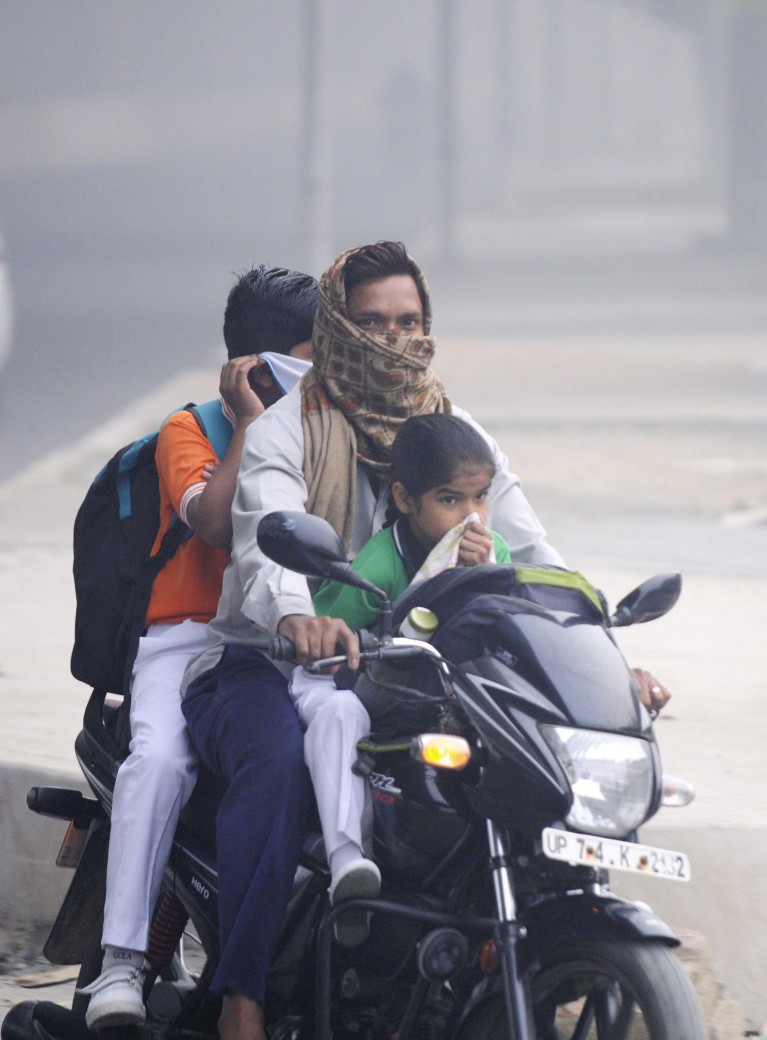
Children leaving for school amid heavy smog in Noida, India. Credit: Sunil Ghosh/Hindustan Times/Sipa US/ Alamy Stock Photo
Exposure to inhalable fine particles in ambient air has led to deaths and economic losses in major Indian cities1.
Exposure to particles with a diameter of 2.5 micrometres or less contributed to more than 80,000 premature deaths in 2017, say researchers at the CSIR-National Environmental Engineering Research Institute in Nagpur. The particles can penetrate the lung barrier and even enter the bloodstream.
Ischaemic heart disease was the leading cause of death, accounting for 47% of total mortality, followed by chronic obstructive pulmonary disease, stroke, lower respiratory infection and lung cancer.
The researchers say their results will be useful for framing plans to improve the health of people living in the affected cities.
The scientists studied human exposure to fine particles and the concentrations of these particles in 31 Indian cities in two categories – cities with population exceeding 5 million and those with a population between 1 and 5 million.
They found higher concentrations of fine particles in Delhi, Dehradun, Ghaziabad, Kanpur, Lucknow and Patna. Other cities, such as Chandigarh, Amritsar, Ludhiana, Kolkata and Asansol, also exhibited high levels of air pollution.
The highest concentration of particles was found to be almost five times India’s permitted limit.
The researchers attribute 8.4% of total premature mortality to excess exposure to fine particles and estimate that this led to an economic loss of 90,185.6 million US$ in 2017.
The researchers say the National Clean Air Action Programme could slightly improve this grim combination of mortality and economic loss. The programme, launched in 2019, aims to cut the concentration of fine particles in air by 2024 in all Indian cities.
